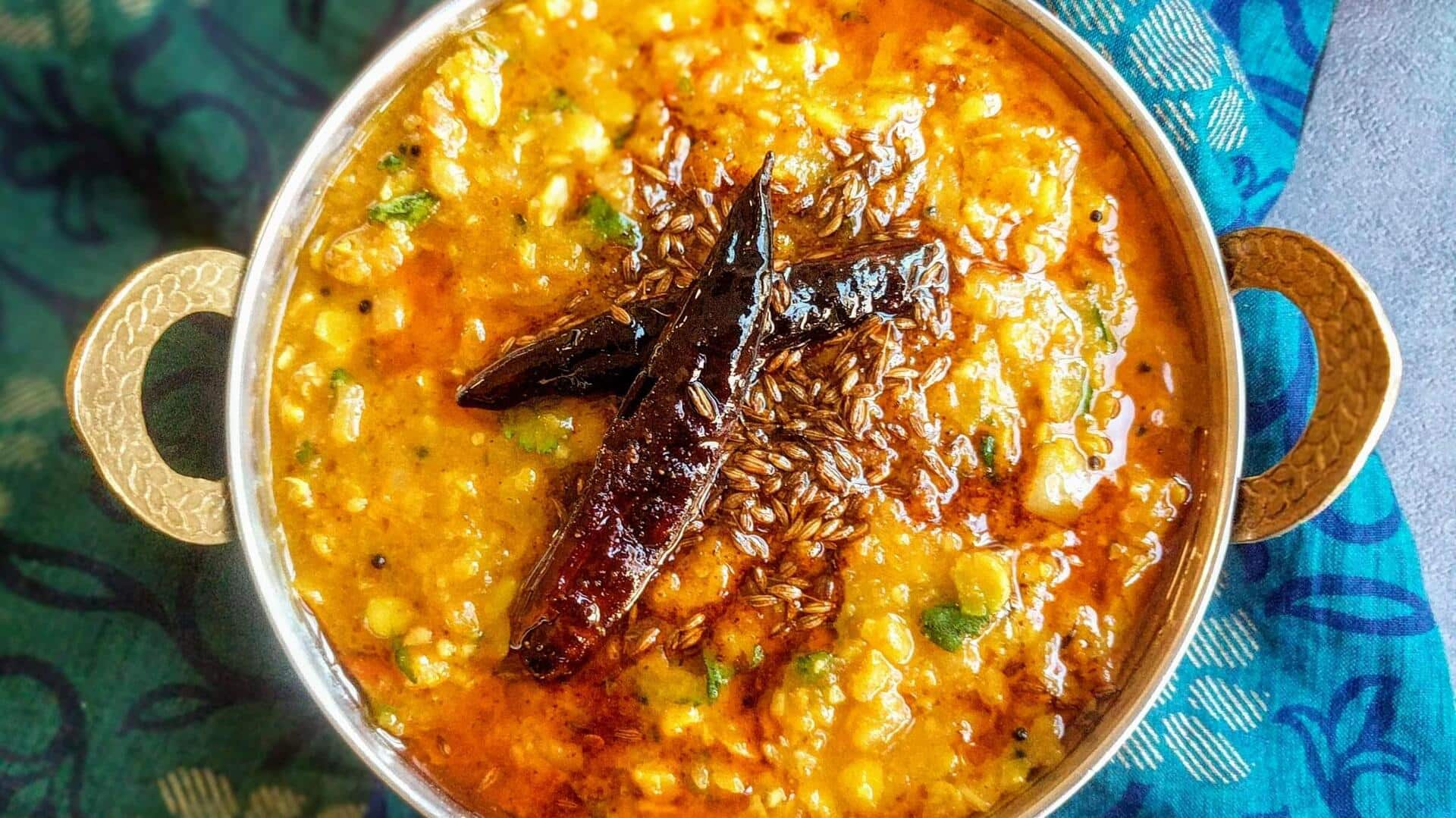
Dal tadka: Origin, history, and variations
What's the story
Dal tadka, a staple in Indian cuisine, has a rich history that spans across various regions of India. This dish, primarily made from lentils and tempered with spices, showcases the diversity and adaptability of Indian culinary practices. Each region has its unique take on dal tadka, reflecting local tastes and ingredients. Understanding its journey offers insights into how regional influences have shaped this beloved dish over time.
Northern flavors
North India's influence
In North India, dal tadka is usually made with yellow lentils such as toor or moong dal. The tempering consists of cumin seeds, garlic, and ghee for a rich flavor profile. This variant is commonly served with rice or roti and is popular for its comforting taste. The addition of ghee makes for a distinct aroma which is typical of North Indian cuisine.
Western twist
Western variations
Western India adds its own twist to dal tadka by adding ingredients such as mustard seeds and curry leaves in the tempering process. In states like Gujarat and Maharashtra, the dish may even be prepared with jaggery to add a hint of sweetness to it. This variation highlights the sweet and savory flavor balance that is common in Western Indian cooking.
Southern style
Southern adaptations
In South India, dal tadka usually has red lentils or masoor dal as the main ingredient. The tempering has mustard seeds, dried red chilies, and coconut oil for an added layer of flavor. This version can also be spicier than the others due to the generous use of chilies in South Indian cuisine.
Eastern touches
Eastern influences
Eastern regions like Bengal has its own take on dal tadka where panch phoron—a mix of five spices—are used for tempering. Lentils such as moong or masoor are used here as well. The addition of bay leaves while cooking gives an aromatic touch that is exclusive to this region's style of cooking.